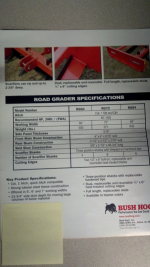jenkinsph
Super Star Member
If the rear of the device is lifted from either side, not both, it will try and twist the top link.
It is not that hard to calculate the force but you have to have more information.
Think about this. If you have something stuck and try to pull it with a chain connected to another "puller" then the tires spin on the "puller".
Say the chain is 50', if a person moves to the middle of the chain and steps on it with 100lbs of force. That action will pull both together as the force is multiplied by many times.
Think of it as a lever, if the chain is in tension 1ft off the ground and you move it to the ground by that foot (again in the middle) it will pull the two together by a very small amount with much more force than the 100lb applied.
Look at mowers that mount by a 3 pt, they pivot by the force the top link has if loaded at the rear.
Reading your reply I do agree with the scenario of stepping on the chain in the middle will result in a very large increase in tension between the chain ends. This would be more important to understand when chaining down equipment on a trailer. Not sure what cantonary forces (spelling?) has to do with this?
My point was and still is that the top link whether screw type or hydraulic cylinder is free to move side to side on swivels at each end. With that in mind there isn't enough resistance to matter. The developed length of the top link post is about 18 inches more or less so the lever length is rather short. This is well within reason for a 3 inch box beam or larger to handle.

